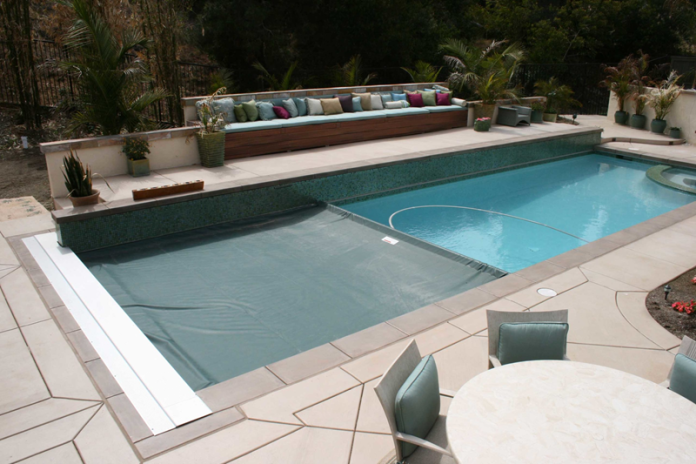Investing in inground pool covers can significantly impact your pool’s maintenance costs and overall longevity, making them a worthy consideration for pool owners. By reducing energy bills, conserving water, and minimizing maintenance expenses, these covers offer a practical solution that extends beyond mere convenience.
They protect your pool from debris, chemical imbalances, and algae growth, ultimately enhancing its lifespan and ensuring a cleaner, safer swimming environment. This document will provide a detailed cost-benefit analysis, weighing the initial investment against long-term savings and convenience.
Explore how this investment not only safeguards your pool but also offers peace of mind and lasting value.
Initial Investment Breakdown
When considering the initial investment in inground pool covers, several factors contribute to the overall cost. The type of cover—whether it’s a basic solar cover, a manual safety pool cover, or a sophisticated automatic swimming pool safety cover—plays a significant role in determining the price.
Solar covers are generally the most affordable, while automatic covers are on the higher end of the spectrum. Installation costs can vary based on the complexity of the cover and whether professional installation is chosen.
Additionally, maintenance and potential repair costs should be considered as part of the initial investment. While the upfront costs may seem substantial, the potential savings on energy bills, water conservation, and reduced maintenance efforts can offset these expenses over time. Breaking down these costs helps pool owners make informed decisions, ensuring that the investment aligns with their budget and long-term savings goals.
Comparing Energy Savings
inground pool covers are effective tools for reducing energy consumption. By minimizing water evaporation, pool covers significantly reduce the need for constant heating, which can lead to substantial energy savings.
For instance, a well-fitted safety pool cover can cut heating costs by up to 70%. This reduction is particularly notable in regions with cooler climates, where pools require more heating. Furthermore, by maintaining a consistent water temperature, pool covers reduce the strain on heating systems, prolonging their lifespan and reducing maintenance costs. The choice between different types of covers—such as solar, manual, or automatic—affects the level of energy efficiency achieved.
Solar covers, for instance, use the sun’s energy to naturally warm the pool, further decreasing the reliance on artificial heating. By evaluating the energy savings against the initial investment, pool owners can better understand the financial benefits, making the decision to invest in a pool cover both environmentally and economically sound.
Long-Term Benefits of Inground Pool Covers
Inground pool covers offer more than just immediate advantages; they contribute to long-term benefits that enhance the overall value and functionality of your pool. By providing protection against environmental factors and reducing maintenance demands, these covers are a key component in ensuring the longevity and efficiency of pool ownership.
This section discusses how inground pool covers extend beyond basic utility to offer enduring advantages that are crucial for preserving your pool’s condition and optimizing its performance.
Protection from Debris and Algae
One of the primary advantages of inground pool covers is their ability to protect the pool from debris and algae growth. By covering the pool, leaves, dirt, and other debris are kept out, reducing the need for frequent cleaning and preventing clogging in filtration systems. This not only saves time but also extends the life of the pool’s equipment.
Additionally, by limiting sunlight exposure, pool covers significantly hinder algae growth, which thrives in warm and light-filled environments. The reduced presence of algae means less reliance on chemical treatments, leading to cost savings and a more environmentally friendly maintenance approach.
Safety pool covers also provide an extra layer of protection, ensuring that the water remains clean and safe for swimming. These benefits contribute to a healthier, more enjoyable swimming environment, and underline the importance of considering a pool cover as a long-term investment in the care and maintenance of your pool.
Extending Pool Lifespan
Inground pool covers play a pivotal role in extending the lifespan of a swimming pool. By shielding the pool from harsh weather conditions and reducing exposure to ultraviolet rays, covers help maintain the structural integrity of the pool. UV rays can degrade pool materials over time, leading to discoloration and weakening of the pool’s surface.
Moreover, by minimizing water evaporation, covers maintain optimal water levels, thus preventing the overuse of the pool’s filtration and pumping systems. This reduces wear and tear on these vital components, minimizing the need for costly repairs or replacements.
Additionally, by keeping the pool clean and reducing chemical imbalances, pool covers decrease the likelihood of corrosion and damage to the pool’s infrastructure. Collectively, these factors contribute to a longer-lasting pool that remains in optimal condition for years. Investing in a pool cover is, therefore, a strategic decision that promotes longevity and preserves the quality of the pool environment.
Maintenance and Convenience Factors
Maintaining a pool can be a daunting task, but inground pool covers make the process significantly easier. These covers offer multiple advantages that simplify upkeep, conserve resources, and enhance the overall pool ownership experience.
This section delves into the various maintenance and convenience benefits provided by inground pool covers, highlighting how they contribute to reduced effort and cost savings in the long run.
Reducing Water and Chemical Usage
Inground pool covers are instrumental in conserving water and reducing chemical usage, directly impacting maintenance efforts. By preventing water evaporation, these covers help retain the pool’s water levels, significantly decreasing the need for frequent refills. This conservation of water is not only environmentally friendly but also cost-effective, especially in regions where water scarcity is a concern.
Additionally, by keeping debris out and reducing exposure to contaminants, pool covers maintain the water’s chemical balance. This means fewer chemicals are necessary to maintain safe and clean swimming conditions, resulting in lower chemical expenses.
Moreover, with less frequent chemical adjustments, pool owners can enjoy a more stable and balanced aquatic environment. Overall, reducing water and chemical usage through the use of pool covers simplifies pool maintenance, making them a practical addition to any pool management routine, and offering convenience and financial savings in the long run.
Simplifying Pool Upkeep
Inground pool covers significantly simplify pool upkeep by reducing the time and effort required for maintenance. By covering the pool, debris such as leaves, dirt, and insects are kept out, minimizing the need for frequent cleaning. This not only saves time but also reduces the workload on the pool’s filtration system, resulting in fewer clogs and less frequent filter maintenance.
Additionally, pool covers help maintain consistent water temperature and chemical balance, reducing the need for constant adjustments and chemical treatments. For busy pool owners, this means less time spent on routine tasks and more time enjoying the pool.
Automated swimming pool safety covers further enhance convenience by allowing easy opening and closing with minimal effort. Overall, the use of pool covers translates to a more manageable maintenance routine, ensuring that the pool remains in optimal condition with less hassle and more efficiency.
Evaluating Return on Investment
When it comes to evaluating the return on investment for inground pool covers, it’s crucial to consider both immediate and long-term benefits. This section will provide insights into how the initial costs of pool covers can be justified through sustained savings and enhanced convenience, ensuring that your investment leads to both economic and practical advantages.
Justifying the Initial Costs
Justifying the initial costs of inground pool covers involves assessing both immediate and long-term benefits. While the upfront investment may appear significant, the savings achieved over time can offset these costs, making them a sound financial decision.
By reducing energy usage, water loss, and chemical expenses, pool covers contribute to lower operational costs. For example, reduced heating requirements can decrease energy bills by a substantial margin, particularly in colder climates. Additionally, the decreased need for chemical treatments saves money and promotes a healthier swimming environment. The extended lifespan of pool equipment due to reduced wear and tear also lessens future replacement costs.
Moreover, the convenience and reduced maintenance demands enhance the overall pool ownership experience. When considering these factors, the initial expenditure on a pool cover is not only justified but also represents a strategic investment for long-term savings and enjoyment. This comprehensive approach ensures that pool covers deliver value and peace of mind to owners.
Balancing Convenience and Savings
Balancing convenience and savings is a key consideration when evaluating the return on investment for inground pool covers. Pool covers streamline maintenance, saving time and effort for owners, which translates to significant convenience gains.
Automated covers, for instance, offer the ultimate ease-of-use, allowing quick pool access with minimal manual labor. This convenience doesn’t just enhance user experience; it also supports regular use and enjoyment of the pool. On the savings front, reduced energy consumption, water conservation, and decreased chemical use contribute to lower operational costs. By preventing water evaporation and maintaining stable temperatures, pool covers reduce heating demands, leading to lower energy bills.
Additionally, the protection from debris cuts down on cleaning time and costs associated with filtration maintenance. Together, these benefits make pool covers a worthwhile investment. Balancing these elements ensures that pool owners not only save money but also enjoy a more user-friendly and efficient pool management system.
Final Thoughts
In conclusion, investing in inground pool covers is a decision that offers substantial benefits to pool owners. While the initial costs may be significant, the long-term savings on energy, water, and maintenance make it a financially sound choice. Beyond the economic advantages, pool covers enhance convenience and reduce the time and effort required for upkeep, allowing owners to enjoy their pools more fully and with less hassle.
Moreover, the environmental benefits of reduced water usage and chemical reliance add an extra layer of value to the investment. By protecting the pool from debris and harsh environmental conditions, these covers extend the lifespan of pool equipment and surfaces, ensuring that the pool remains in excellent condition for years to come.
Overall, the comprehensive advantages of inground pool covers—from financial savings and convenience to environmental protection and longevity—make them a valuable addition to any pool. Whether you prioritize cost-efficiency, ease of maintenance, or environmental responsibility, a high-quality pool cover can meet your needs and enhance your pool ownership experience.















